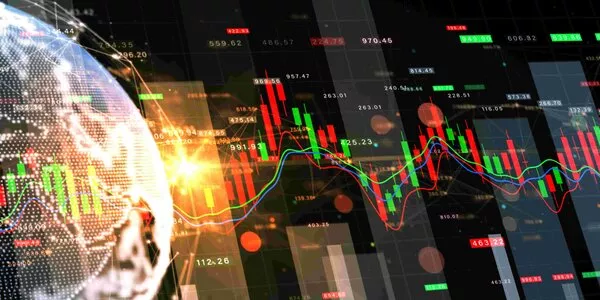
ESG: It's not just great to be good
Investing according to environmental, social and governance criteria can be done in various ways, with continuing development of filters and ways of analysing companies. As the market in ESG indexes and investments linked to sustainability matures, there is a wealth of opportunity for research that delivers innovative ways to buy this exposure.
Originally published on risk.net in October 2019
There is no single benchmark for investing according to environmental, social and governance (ESG) criteria, while an established convention of what fits into this category remains elusive. ESG is neither an asset class nor has it been proven to be an equity factor.

There are two approaches. The first, more established, is that ESG is a feature intrinsic to the operations of many companies and, to invest in the best of these companies, you need to look at how much better their credentials are. You can also select companies that have gained momentum in their efforts to improve their ESG credentials.
This fundamental research approach has provided returns and pleases the many investors that want it all – and for whom ‘all’ must include a good return on investment alongside a positive environmental or social impact. Societe Generale has created research reports revealing companies that demonstrate fine and improving ESG credentials while offering returns that, over the past five years, have beaten the Stoxx 600. Clearly, and rather obviously, financial performance or alpha generation will have to remain part of the equation.
To identify what is financially relevant and material, Societe Generale reviews information from the ESG ratings agencies – Vigeo Eiris, Sustainalytics and others – before sitting down with mainstream analyst colleagues to identify pragmatically what makes sense financially, without taking an ethical or philosophical stance, according to Yannick Ouaknine (pictured), head of sustainability research at Societe Generale in Paris. “There is no direct link unless there is a reputational factor,” he says.
ESG alongside factors
The second way of looking at these investments is to delve deep into preferred investment styles, which means looking at equity factors, and then thinking ‘sustainable’. This approach also takes the view that the two philosophies of superior investment returns and ESG can and should run alongside each other. “We will be using equity factors alongside ESG factors to create a more sensible strategy, because more and more managers have to demonstrate they are seeking to improve the ESG profile of their portfolio,” says Georgios Oikonomou, a quantitative analyst at Societe Generale in London. “The question is, how do we integrate ESG into the investment process in a more efficient way and without a performance penalty, so it is possible to improve the ESG rating of your fund without losing performance?”
To make this happen, the bank uses its expertise in equity factors. “We try to maximise the ESG rating in the portfolio, but without creating biases in sectors and factors,” says Oikonomou. “For example, if there are companies that score well in ESG but are expensive to incorporate in portfolios, we may need to correct this. We will still screen out, but in a way that we stay close to the benchmarks. It’s about enhancing the portfolio and incorporating ESG at the same time.”
The analysis is based on standardised ESG ratings from Sustainalytics, and those who have done quant or used data providers will appreciate the fact the company has no backfilling of scores. “They have been in this space for around 20 years and the scores we are using today are the ones they have produced over time, so there is no backfilling, which is critical for the data analysis,” says Xavier Dubourg, head of quantitative investment strategies equity trading at Societe Generale in Paris. “We had access to the point-in-time scores, which is very good. This may restrict the investment universe, but we stick to the most liquid names, so that’s fine with us.”
When an investor wants to buy into the best ESG names, one of the preferred approaches is intra-sector, where they invest in the best-in-class or top ESG names in each sector, although many investors retain a desire for best-in-universe. “It can often make more sense to compare stocks from the same sectors with regard to ESG,” says Dubourg. “A bank does not have the same material ESG key performance indicators as a chemical or consumer company would have, so it makes sense to look at it by sector – hence the name ‘best-in-class’ approach, as opposed to ‘best-in-universe’.
“The numbers tell us, from an investment standpoint – performance-to-volatility, performance-to-drawdown – that you are better off following the best-in-class, rather than best-in-universe route. Both the numbers and the rationale are consistent.”
Follow the leaders
Discussions with a major Nordic pension fund led the bank to partner with Lyxor to create an exchange-traded fund (ETF) that tracks the MSCI Europe ESG Leaders Index. “As part of the increasing trend of moving passive equity-linked traditional benchmarks to ESG-friendly alternatives, Societe Generale Group raised close to €640 million in the MSCI Europe ESG Leaders ETF,” says Fredrik Slyta, head of global markets sales, Nordic region, at Societe Generale in Stockholm. “We have executed these trades predominantly with Nordic institutional investors. ESG Leaders is a theme that resonates well in that region.
“We also see institutional investors in the same region switching from index futures tracking traditional equity benchmarks to the recently launched ESG-friendly futures. This has happened as the pressure from senior management and investors to exclude certain stocks has intensified. We have a long history of providing liquidity and execution in futures and are well placed to participate as assets in the ESG range are set to increase substantially.”
This was the start of increasing interest from investors, according to Antoine Carle (pictured), a trader at Societe Generale in Paris. “Since this deal, every week, we have either pricing requests on ESG indexes or clients looking for information, such as what the flows are or whether there are indexes created by the main index providers. They are either basic questions from investors who are hearing the buzz, or pricing requests from those in the process of ESG-proofing their portfolios.”
Interest in ESG is the result of a sequence of events. As with subprime and Greece, ESG is now on-trend, but there has also been the influence of the 2015 UN Climate Change Conference in Paris, as well as increasing fears of global warming. “More specifically, clients attribute the change to their own boards of management, their customers’ requests, portfolio managers’ views or a desire to do marketing around a contemporary trend,” says Carle.
The Nordic pension fund expressed a strong conviction to invest in ESG Leaders, leading the bank to partner with Lyxor in the creation of an ETF based on the client’s needs and conclude a deal that revealed the best of a collaborative approach.
Societe Generale’s group asset manager offers a range of ETFs that include ESG momentum, giving companies with improving ESG scores more weight in an index.
Lyxor manages €1.6 billion in ESG ETFs based on two pillars: ratings and thematics. The ratings-based ETFs provide broad ESG solutions for portfolio allocations. Lyxor was the first to launch ETFs based on the MSCI ESG Leaders family – top 50% best-in-class – which is widely used by asset owners, and the ESG Trend Leaders, which supports change by rewarding companies with positive ESG momentum.
“Our thematic ESG ETFs form the only ETF range that contributes to four of the UN’s Sustainable Development Goals: water, new energy, climate action (green bonds) and gender equality,” says François Millet, head of ETF strategy and ESG innovation at Lyxor in Paris.
“We launched water and new energy ETFs as early as 2007, the first green bond ETF – the only one to have received the Greenfin label – and the first gender-equality ETF in Europe. Recently, Lyxor converted a full range of corporate bond ETFs to ESG indexes representing €2.2 billion of additional assets, completing its set of ESG index solutions for multi-asset investors.”
The trend and the futures
“It’s not just great to be good now, it’s also what trend you are on. Are you generating a good momentum in improving your ESG credentials?” asks Isabelle Millat, head of sustainable investment solutions for global markets at Societe Generale in Paris.
Furthermore, there are also a lot of predominantly institutional investors seeking futures exposure to indexes that screen out names generally considered poor from an ESG perspective, according to Slyta. “One of the big asset managers in the Nordics has prohibited its portfolio managers from investing in broad-based futures such as the Eurostoxx or S&P 500 because you would gain exposure to some of these ‘bad’ ESG names,” says Slyta.
“They have then had discussions with different exchanges and they have now listed what they call ESG-friendly futures, where they screen away certain names and criteria, which means they can still invest in the futures because the alternative would be to trade out of all of their benchmark exposure to the Eurostoxx 50 and S&P 500 indexes and invest into the underlying single names instead,” says Slyta. “In some cases, the discussion has gone quite far, with management prohibiting certain exposures that give indirect exposure to some of the bad names.”
The index future
Societe Generale is preparing an index, which should be ready in October, enabling investors to precisely invest in the top ESG companies – using a best-in-class approach – with a specific weighting mechanism and a trading approach that aims to minimise market impact, all of which results in an index that will compare favourably with equity benchmarks, but with a limited tracking error. Investors will be able to access the new index through swaps or funds.
One example, from a trade completed in the middle of September, included a client with a portfolio not linked to ESG, who wanted to move his exposure very quickly in that direction, according to Carle. “He did not physically own the names, so must have swaps or ETFs, and traded a long-short basket within the indexes he was tracking. In the middle of September, he went short the bad and long the good ESG names, which was packaged into a swap done by us,” says Carle.
The message to investors is that there are now sufficiently robust datasets in ESG as well as actionable approaches that allow them to improve their ESG exposure within their existing framework. “And, of course, because they are provided by Societe Generale, everything can be wrapped up in any format you want,” says Dubourg.


